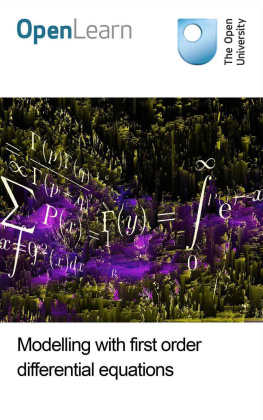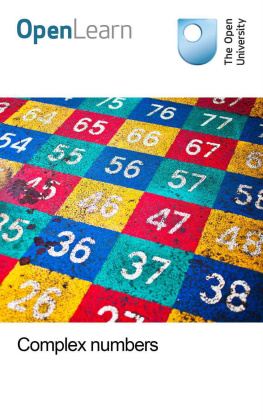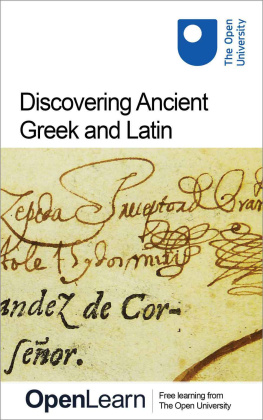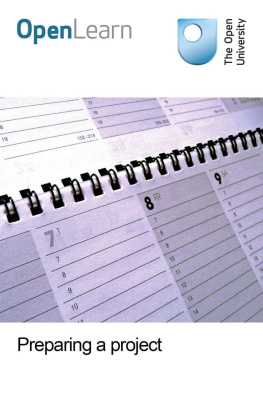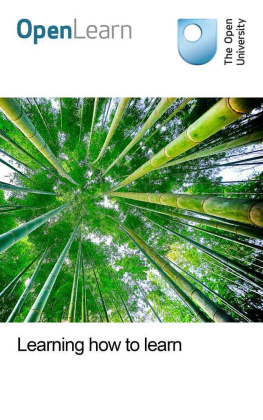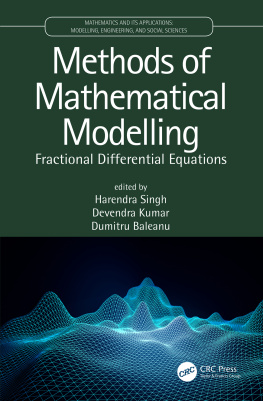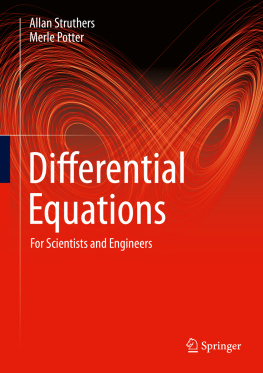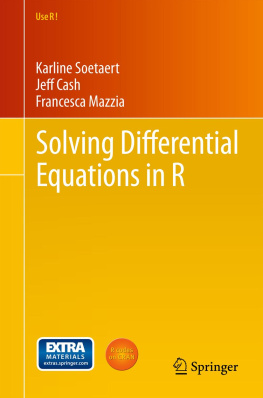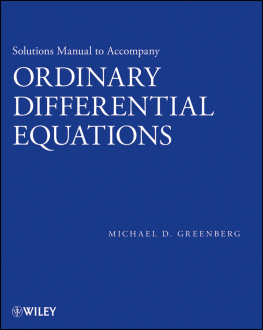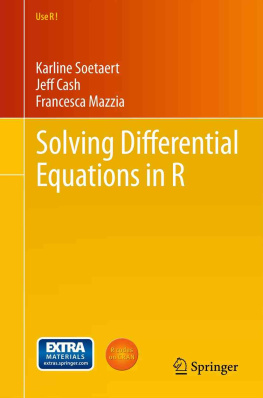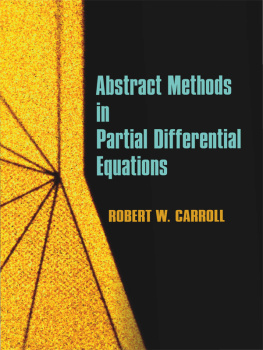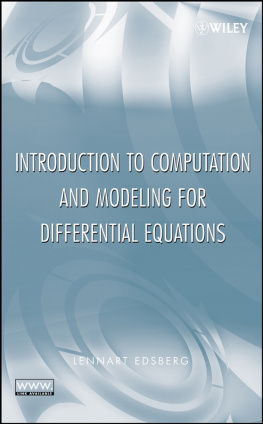University - Modelling with first order differential equations
Here you can read online University - Modelling with first order differential equations full text of the book (entire story) in english for free. Download pdf and epub, get meaning, cover and reviews about this ebook. year: 2016, publisher: The Open University, genre: Children. Description of the work, (preface) as well as reviews are available. Best literature library LitArk.com created for fans of good reading and offers a wide selection of genres:
Romance novel
Science fiction
Adventure
Detective
Science
History
Home and family
Prose
Art
Politics
Computer
Non-fiction
Religion
Business
Children
Humor
Choose a favorite category and find really read worthwhile books. Enjoy immersion in the world of imagination, feel the emotions of the characters or learn something new for yourself, make an fascinating discovery.
- Book:Modelling with first order differential equations
- Author:
- Publisher:The Open University
- Genre:
- Year:2016
- Rating:3 / 5
- Favourites:Add to favourites
- Your mark:
- 60
- 1
- 2
- 3
- 4
- 5
Modelling with first order differential equations: summary, description and annotation
We offer to read an annotation, description, summary or preface (depends on what the author of the book "Modelling with first order differential equations" wrote himself). If you haven't found the necessary information about the book — write in the comments, we will try to find it.
Modelling with first order differential equations — read online for free the complete book (whole text) full work
Below is the text of the book, divided by pages. System saving the place of the last page read, allows you to conveniently read the book "Modelling with first order differential equations" online for free, without having to search again every time where you left off. Put a bookmark, and you can go to the page where you finished reading at any time.
Font size:
Interval:
Bookmark:
About this free course
This free course provides a sample of level 2 study in Mathematics: www.open.ac.uk/courses/find/mathematics.
This version of the content may include video, images and interactive content that may not be optimised for your device.
You can experience this free course as it was originally designed on OpenLearn, the home of free learning from The Open University: www.open.edu/openlearn/science-maths-technology/mathematics-and-statistics/mathematics-education/modelling-first-order-differential-equations/content-section-0.
There youll also be able to track your progress via your activity record, which you can use to demonstrate your learning.
The Open University, Walton Hall, Milton Keynes, MK7 6AA.
Copyright 2016 The Open University
Intellectual property
Unless otherwise stated, this resource is released under the terms of the Creative Commons Licence v4.0 http://creativecommons.org/licenses/by-nc-sa/4.0/deed.en_GB. Within that The Open University interprets this licence in the following way: www.open.edu/openlearn/about-openlearn/frequently-asked-questions-on-openlearn. Copyright and rights falling outside the terms of the Creative Commons Licence are retained or controlled by The Open University. Please read the full text before using any of the content.
We believe the primary barrier to accessing high-quality educational experiences is cost, which is why we aim to publish as much free content as possible under an open licence. If it proves difficult to release content under our preferred Creative Commons licence (e.g. because we cant afford or gain the clearances or find suitable alternatives), we will still release the materials for free under a personal end-user licence.
This is because the learning experience will always be the same high quality offering and that should always be seen as positive even if at times the licensing is different to Creative Commons.
When using the content you must attribute us (The Open University) (the OU) and any identified author in accordance with the terms of the Creative Commons Licence.
The Acknowledgements section is used to list, amongst other things, third party (Proprietary), licensed content which is not subject to Creative Commons licensing. Proprietary content must be used (retained) intact and in context to the content at all times.
The Acknowledgements section is also used to bring to your attention any other Special Restrictions which may apply to the content. For example there may be times when the Creative Commons Non-Commercial Sharealike licence does not apply to any of the content even if owned by us (The Open University). In these instances, unless stated otherwise, the content may be used for personal and non-commercial use.
We have also identified as Proprietary other material included in the content which is not subject to Creative Commons Licence. These are OU logos, trading names and may extend to certain photographic and video images and sound recordings and any other material as may be brought to your attention.
Unauthorised use of any of the content may constitute a breach of the terms and conditions and/or intellectual property laws.
We reserve the right to alter, amend or bring to an end any terms and conditions provided here without notice.
All rights falling outside the terms of the Creative Commons licence are retained or controlled by The Open University.
Head of Intellectual Property, The Open University
The Open University
United Kingdom by Martins the Printers Ltd, Berwick-upon-Tweed, TD15 1RS.
978-1-4730-1564-7 (.kdl)
978-1-4730-0796-3 (.epub)
This course lays the foundations of Newtonian mechanics and in particular the procedure for solving dynamics problems. The prerequisite skills needed for this course are the ability to solve first- and second-order differential equations, a knowledge of vectors, and an understanding of the concept of a force.
This OpenLearn course provides a sample of level 2 study in Mathematics.
After studying this course, you should be able to:
- understand and use the basic terms for the description of the motion of particles: position, velocity and acceleration
- understand, use and differentiate vector functions
- understand the fundamental laws of Newtonian mechanics
- solve mechanics problems in one dimension by drawing a sketch, choosing a suitable x-axis and origin, drawing a force diagram, applying Newtons second law, taking the x-component, and making suitable substitutions
- solve mechanics problems in one dimension that involve one or more of the forces of gravity, friction, air resistance and water resistance.
The main teaching text of this course is provided in the workbook below. The answers to the exercises that you'll find throughout the workbook are given in the answer book. You can access it by clicking on the link under the workbook. When prompted after exercise 2.2 to watch the video for this course, return to this page and watch the four clips below. After you've watched the clips, return to the workbook.
Click the link below to open the workbook (PDF, 1.0 MB).
Workbook
Click the link below to open the answerbook (PDF, 0.4 MB).
Answer book
Workbook contents
Introduction
1 Describing motion
1.1 The motion of a particle
1.2 One-dimensional motion
2 A theory of motion
3 Predicting motion
4 Some more force models
4.1 Friction
4.2 Air resistance
4.3 Water resistance
Click play on the blank screen below to watch the low resolution version of 'A question of Newton', or 'Launch in a separate player' for the high resolution version.
Video content is not available in this format.
A question of Newton - Part 1
Click play or 'Launch in a separate window' to continue watching 'A question of Newton'.
Video content is not available in this format.
A question of Newton - Part 2
Click play or 'Launch in a separate window' to see the third part of the video.
Video content is not available in this format.
A question of Newton - Part 3
Click play or 'Launch in a separate window' to watch the final part of the video.
Video content is not available in this format.
A question of Newton - Part 4
This free course provided an introduction to studying Mathematics. It took you through a series of exercises designed to develop your approach to study and learning at a distance and helped to improve your confidence as an independent learner.

There are more than 800 courses on OpenLearn for you to choose from on a range of subjects.
Find out more about all our free courses.
Find out more about studying with The Open University by visiting our online prospectus.
If you are new to university study, you may be interested in our Access Courses or Certificates.
Font size:
Interval:
Bookmark:
Similar books «Modelling with first order differential equations»
Look at similar books to Modelling with first order differential equations. We have selected literature similar in name and meaning in the hope of providing readers with more options to find new, interesting, not yet read works.
Discussion, reviews of the book Modelling with first order differential equations and just readers' own opinions. Leave your comments, write what you think about the work, its meaning or the main characters. Specify what exactly you liked and what you didn't like, and why you think so.

